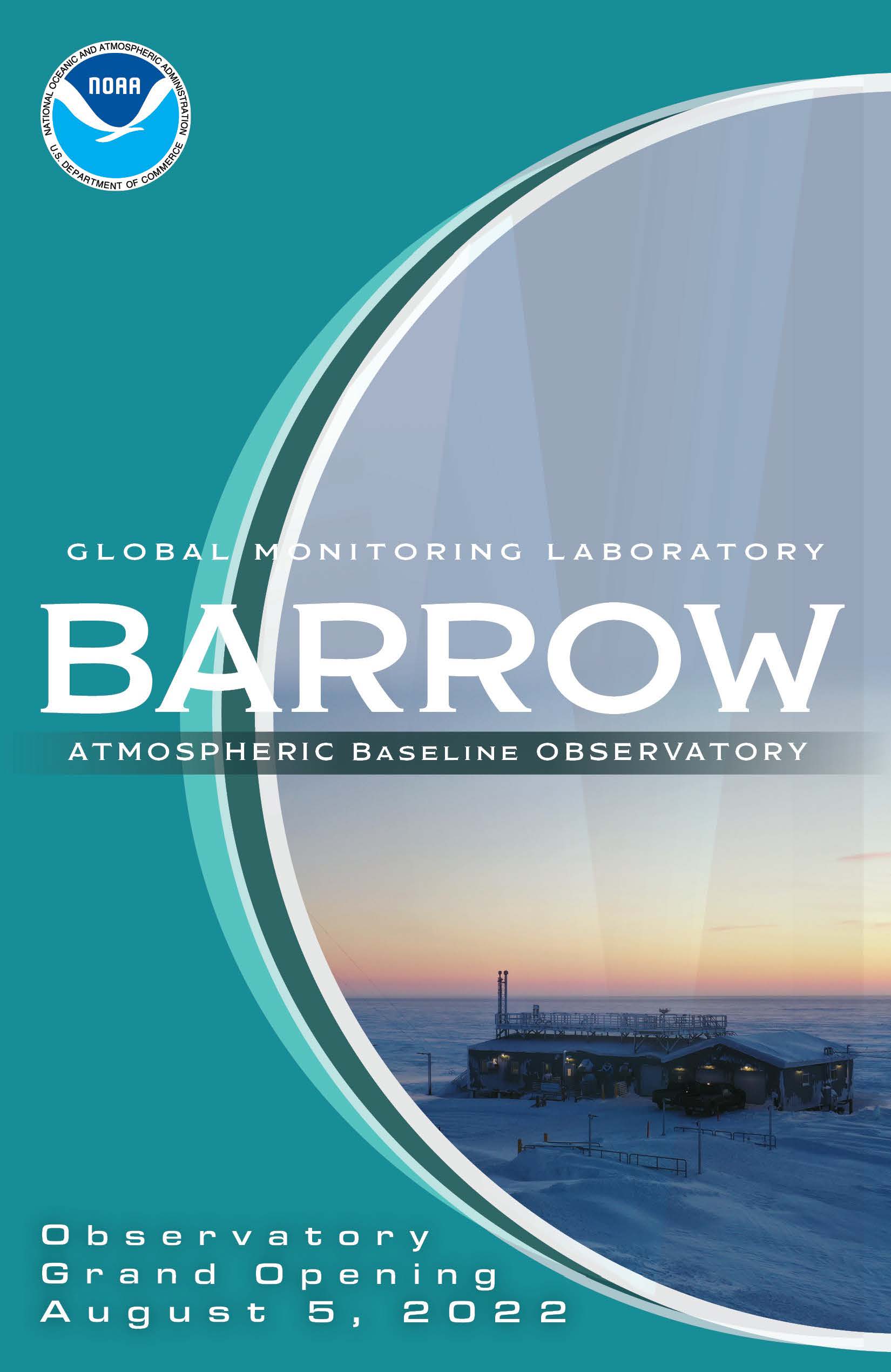NOAA dedicates new Arctic observatory in Utqiaġvik
August 4, 2022

For almost half a century, some of the most important observations of the changing Arctic climate were captured and analyzed in a cramped 960 square-foot temporary structure at the northernmost tip of the United States.
NOAA's Barrow Atmospheric Baseline Observatory is one of four monitoring stations maintained by the Global Monitoring Laboratory, which produce long-term, highly accurate data sets of changing atmospheric composition and form one of the foundations of international climate research.
Established in 1973, Barrow was the first research observatory in the Arctic. Built for NOAA by the Navy, it was meant to be temporary, but far outlasted expectations.
Finally in 2020, after many years of planning, observatory staff moved into a new, expanded observatory and research facility worthy of the significance of its work.
“The data collected here at the Barrow Observatory and through NOAA’s Global Observation Network are essential for helping us understand how our atmosphere and climate are changing, and how we can improve our climate predictions,” said Cisco Werner, acting NOAA Assistant Administrator for Research at a ceremony dedicating the new facility on August 5.
NOAA's Barrow Atmospheric Baseline Observatory was established by NOAA in January 1973 on a point of land jutting into the Beaufort Sea, where it’s well-positioned to sample air that is minimally influenced by local or regional air pollution sources. Situated on almost 100 acres, the site is also ideal for measuring surface radiation over a natural landscape that will remain undisturbed in perpetuity.
The new, 3,000-square foot, state-of-the-art research facility features a new roof deck, a 30-meter instrument tower, a campaign science platform sized to hold two metal shipping containers, a dedicated computer server room, a high-speed fiber connection to the contiguous U.S., and a permafrost temperature monitoring facility. It also has new amenities like a plumbed bathroom and kitchenette, and an expanded, remodeled garage.
The observatory supports more than 200 measurements including greenhouse gasses, ozone-depleting chemicals such as chlorofluorocarbons, air pollution events from Eurasia known as Arctic Haze, stratospheric ozone depletion, advancing snowmelt dates and lengthening of summers along Alaska's North Slope. Long-term datasets compiled from these measurements offer scientists critical insights on changes in atmospheric composition and the Arctic region. Arctic modeling and satellite observations will benefit from the infrastructure and science available at BRW that allows in situ observations as part of a larger, integrated system. Increasing the number of diverse measurements at the new BRW facility will improve our knowledge of the complex Arctic environment, including the hydrology, glaciology, oceanography, terrestrial, and biological systems, as well as mechanisms related to the entire Arctic system.
Built by UIC Nappairit, LLC, a subsidiary of Ukpeaġvik Iñupiat Corporation, the facility has been designated as a Leadership in Energy and Environmental Design (LEED)-certified building with the U.S. Green Building Council.
The new facility also offers NOAA the opportunity to offer research opportunities to outside scientists and collaborative research projects.
